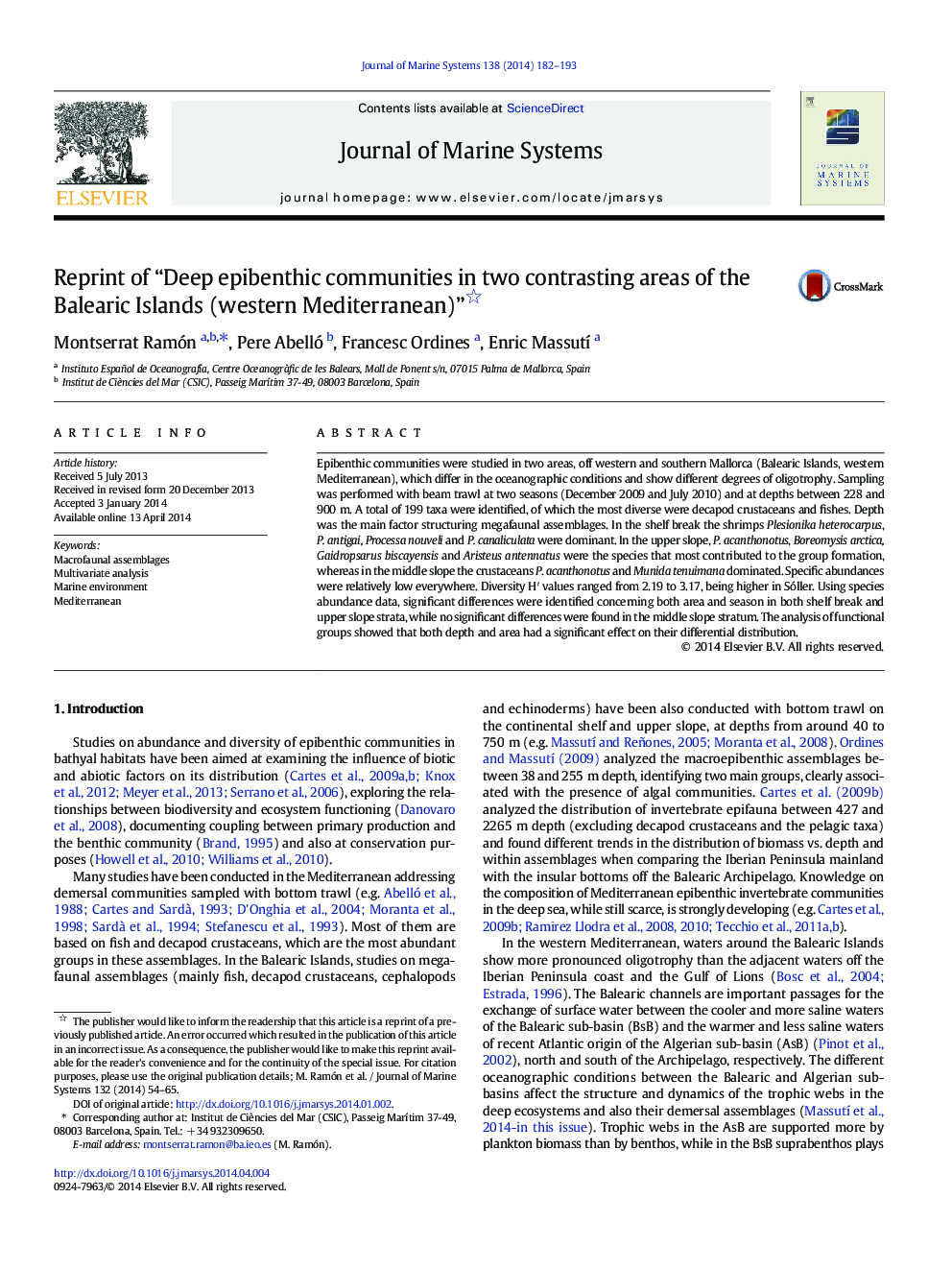| Article ID | Journal | Published Year | Pages | File Type |
|---|---|---|---|---|
| 4548010 | Journal of Marine Systems | 2014 | 12 Pages |
Abstract
Epibenthic communities were studied in two areas, off western and southern Mallorca (Balearic Islands, western Mediterranean), which differ in the oceanographic conditions and show different degrees of oligotrophy. Sampling was performed with beam trawl at two seasons (December 2009 and July 2010) and at depths between 228 and 900Â m. A total of 199 taxa were identified, of which the most diverse were decapod crustaceans and fishes. Depth was the main factor structuring megafaunal assemblages. In the shelf break the shrimps Plesionika heterocarpus, P. antigai, Processa nouveli and P. canaliculata were dominant. In the upper slope, P. acanthonotus, Boreomysis arctica, Gaidropsarus biscayensis and Aristeus antennatus were the species that most contributed to the group formation, whereas in the middle slope the crustaceans P. acanthonotus and Munida tenuimana dominated. Specific abundances were relatively low everywhere. Diversity Hâ² values ranged from 2.19 to 3.17, being higher in Sóller. Using species abundance data, significant differences were identified concerning both area and season in both shelf break and upper slope strata, while no significant differences were found in the middle slope stratum. The analysis of functional groups showed that both depth and area had a significant effect on their differential distribution.
Related Topics
Physical Sciences and Engineering
Earth and Planetary Sciences
Oceanography
Authors
Montserrat Ramón, Pere Abelló, Francesc Ordines, Enric MassutÃ,
